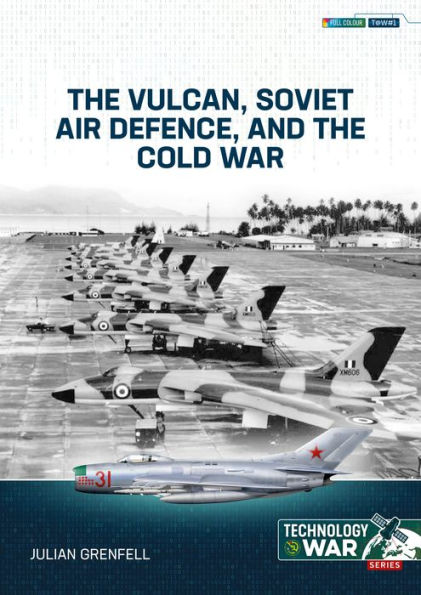The Vulcan, Soviet Air Defence, and the Cold War 1
The operational role of the RAF B2 Vulcan bomber including its deployment, survivability against Soviet defenses, and effectiveness in nuclear war scenarios.The primary aim of this book is to describe the operational role of the RAF’s B2 Vulcan bomber in terms of how it came into being, the manner in which the aircraft was flown operationally, an overview of the Navigation and Bombing System (NBS) and the issues of dropping a bomb from a moving airborne platform. To be able to complete their mission, the crew would have had to successfully fend-off attacks by Soviet Air Defenses long enough for them to drop or release a nuclear weapon on to their allocated target.To appreciate the formidable task which lay ahead for the V-force crews in fighting their way to their targets, the author provides an overview of Soviet Air Defense weapon systems, together with an outline of how the weapons were employed. The foregoing assumes the Vulcan to have been scrambled successfully from their dispersal bases in the UK (within the 4-minute, or so, warning time of impending strikes by Soviet ICBMs), and to have survived the North Sea crossing such that they were then able to enter Warsaw Pact or Soviet airspace.A broad range of topics are covered in order to assist readers in drawing conclusions about the survivability of the Vulcan in nuclear war conditions during the period covered; including: aerodynamics, integrated air defense systems, radar, infrared weapons, active and passive electronic warfare, surface to air missiles, anti-aircraft artillery, air-to-air missiles, and interceptor guns; also included are the ballistics of free-fall weapons and the energy of maneuver in air-to-air combat.A further aim of this book is to demonstrate that military historians who concluded that bomber survival would be low in nuclear war had drawn a false conclusion. The book contends such conclusions were erroneous because most historians did not understand air combat in terms of the performance of aircraft, the performance of air defense weapons, or the post nuclear detonation environment.
1142034113
The Vulcan, Soviet Air Defence, and the Cold War 1
The operational role of the RAF B2 Vulcan bomber including its deployment, survivability against Soviet defenses, and effectiveness in nuclear war scenarios.The primary aim of this book is to describe the operational role of the RAF’s B2 Vulcan bomber in terms of how it came into being, the manner in which the aircraft was flown operationally, an overview of the Navigation and Bombing System (NBS) and the issues of dropping a bomb from a moving airborne platform. To be able to complete their mission, the crew would have had to successfully fend-off attacks by Soviet Air Defenses long enough for them to drop or release a nuclear weapon on to their allocated target.To appreciate the formidable task which lay ahead for the V-force crews in fighting their way to their targets, the author provides an overview of Soviet Air Defense weapon systems, together with an outline of how the weapons were employed. The foregoing assumes the Vulcan to have been scrambled successfully from their dispersal bases in the UK (within the 4-minute, or so, warning time of impending strikes by Soviet ICBMs), and to have survived the North Sea crossing such that they were then able to enter Warsaw Pact or Soviet airspace.A broad range of topics are covered in order to assist readers in drawing conclusions about the survivability of the Vulcan in nuclear war conditions during the period covered; including: aerodynamics, integrated air defense systems, radar, infrared weapons, active and passive electronic warfare, surface to air missiles, anti-aircraft artillery, air-to-air missiles, and interceptor guns; also included are the ballistics of free-fall weapons and the energy of maneuver in air-to-air combat.A further aim of this book is to demonstrate that military historians who concluded that bomber survival would be low in nuclear war had drawn a false conclusion. The book contends such conclusions were erroneous because most historians did not understand air combat in terms of the performance of aircraft, the performance of air defense weapons, or the post nuclear detonation environment.
29.95
Pre Order
5
1

The Vulcan, Soviet Air Defence, and the Cold War 1
120
The Vulcan, Soviet Air Defence, and the Cold War 1
120Paperback
$29.95
29.95
Pre Order

Product Details
| ISBN-13: | 9781804512319 |
|---|---|
| Publisher: | Helion and Company |
| Publication date: | 10/31/2024 |
| Series: | Technology@War |
| Pages: | 120 |
| Product dimensions: | 8.30(w) x 11.70(h) x (d) |
About the Author
From the B&N Reads Blog
